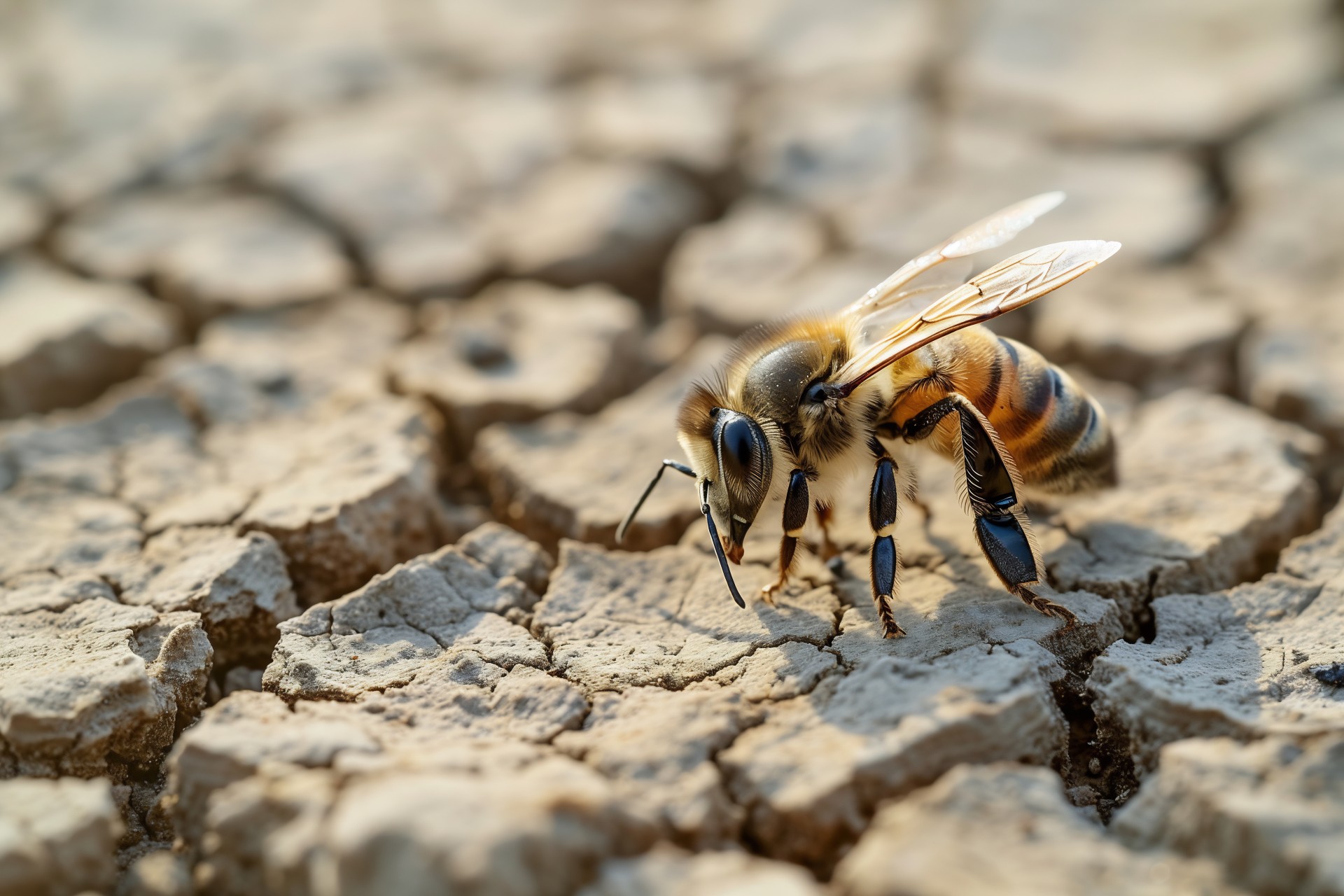This summer is sure to bring some extreme temperatures and break some records. Anyone involved in the beekeeping process should take note; these simple steps can help beehives stay cool this summer. Keeping bees happy and producing honey includes giving them a break from the prolonged hot days and months to come. Skipping these small steps may result in bees leaving to find a new, cooler place to call home. Although bees are resourceful and do much of the temperature regulation on their own, prolonged heat and sun exposure can make things much more complicated than needed. When it comes to keeping beehives thriving this summer, providing water and shade and ensuring proper ventilation can keep bees happy and healthy.
It’s All About the Water
Water is crucial for bee survival. Many choose to provide water sources for their bees or bees in their area. Bees use their olfactory to sense and find water and tell all the other bees about the source. However, providing water sources is very helpful when things are drying out. Beehives have been recorded using multiple liters of water per day, and depleted natural water sources force bees to spend more time and energy getting the hive the required water to keep the temperature ideal. Evaporation is part of the cooling process inside the hive, so providing excess water gives bees more to use. Water is also used to create food for the brood, and foraging bees carry water to the hive and will continue to perform this task as long as the hive needs it. Those hot summer months can pose challenges, especially if water sources dry up.
Convenient and close water sources make collecting water and getting it back to the hive easier. They also free foragers to collect pollen and nectar. Providing water for bees is simple and a huge help.
Shade Beehives from Scorching Heat
Those who have beehives may think it is easier said than done when placing hives in the shade. If hives are not already in the shade of a tree, it isn't like a person can plant a tree today that will provide ample shade before the unrelenting summer sweeps the nation. If moving hives to a shady spot is an option, you may want to work with a local beekeeper to determine if moving the hive risks absconding or if it is ok to move it to a shadier location on your property. Otherwise, shade tents are easy to get and reasonably priced. Large umbrellas may also provide ample shade for hives when hot weather is on its way. Home improvement stores sell pergolas that can be placed over the hive and covered in some beautiful foliage for summer. Beehives are most at risk when the heat is expected to be for extended periods of time. Bees left to their own devices in the direct sunlight may become disoriented, and the hive is at risk.
Proper Ventilation for Hives
The risk of ventilating beehives in the summer is that the scent of honey is emitted, which increases the chance of another species getting greedy and wanting to come to take the honey. However, ventilation is necessary to ensure combs stay intact without melting and overheating. Installing an entrance at the top and covering it with screens allows for ventilation and prevents robbers from coming in. Screened boards at the bottom allow unrestricted airflow through the hive, naturally cooling it down.

Get help with your beehive or bee swarm removal! Call Today 760-224-3040 Or 951-265-8292!
How Bees Regulate Temperatures in the Beehive
The burning question is, how do bees regulate temperatures within the hive? If hive interior temperatures are too high, bees may hang outside the hive in small clusters that look like beards. These smaller clusters may indicate that bees are getting ready to swarm and leave the hive. They may also indicate that the hive is too crowded, making it warm, so they hang outside the hive in clusters to enjoy cooler outside temperatures.
Worker bees deposit water drops on the edges of the honeycomb and create a film on the top of the sealed brood comb. Their wings fan the air and create a colling system to prevent the melting of the wax comb and interfering with the brooding process. Bees are also known to heat shield brood nests by pressing up against it and absorbing some of the heat. Remember: bees live to make more bees, so the temperature of the brooding nest is critical to the hives’ survival, and it is a top priority.
When it comes to managing the hot temperatures this summer, think about taking the same steps for bees as you would for yourself. Staying in the shade, getting plenty of water, and keeping the air flowing are all known ways to stay cool, and bees may need a helping hand this summer.
Contact D-Tek today, call 760-224-3040 OR 951-265-8292.
